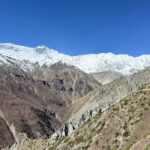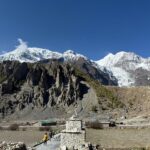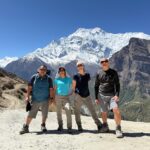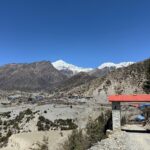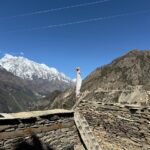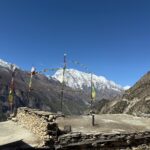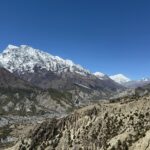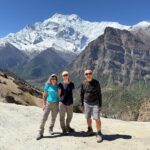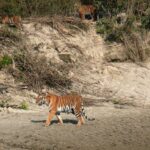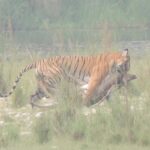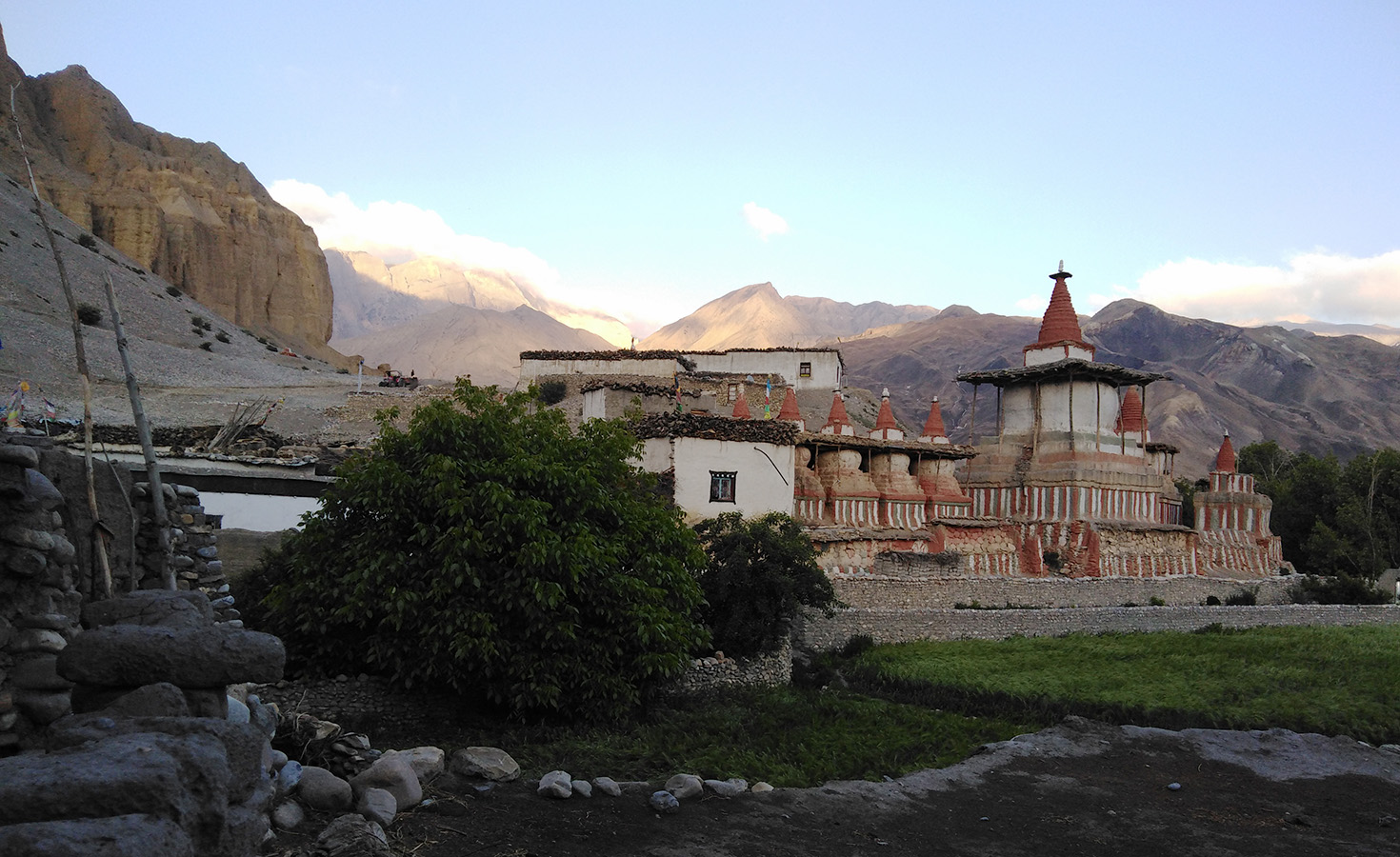
What makes Upper Mustang one of the best overland tour destinations in Nepal
What makes Upper Mustang one of the best overland tour destinations in Nepal is its unique landscapes, rich culture, remote beauty, and ancient monasteries. Upper Mustang is one of the top overland tour destinations in Nepal, thanks to its stunning natural beauty, rich cultural heritage, and remote, untouched landscapes. Located in the trans-Himalayan region, Upper Mustang offers visitors a unique chance to experience a world that has largely escaped the grasp of modernity. The area’s dry terrain, striking cliffs, and ancient cave dwellings create a sharp contrast to the lush greenery found in other regions of Nepal, resulting in a truly unique visual experience.
The cultural appeal of Upper Mustang is just as fascinating. Often referred to as the “Last Forbidden Kingdom,” it has a strong Tibetan Buddhist heritage, featuring centuries-old monasteries, chortens, and traditional Tibetan-style villages. The capital, Lo Manthang, is a walled city that transports you back in time, maintaining its medieval charm and spiritual atmosphere.
Visitors can discover this enchanting land through a scenic overland journey, taking in breathtaking views of the Himalayas, engaging with local communities, and enjoying the rare chance to witness a way of life that has persisted for centuries.
Upper Mustang Region
The Upper Mustang region, often called the “Last Forbidden Kingdom,” is a remote and enchanting area in northwestern Nepal, adjacent to Tibet. Characterized by its stark, arid landscapes and stunning mountain views, Upper Mustang presents a striking contrast to the lush greenery found in other parts of Nepal. This region is steeped in Tibetan Buddhist culture, featuring ancient monasteries, chortens, and a lifestyle that has remained largely unchanged for centuries.
Lo Manthang, the walled capital of Upper Mustang, stands out as a major attraction, providing visitors with a glimpse into medieval Tibetan culture. The area’s seclusion has helped preserve its cultural heritage and traditional way of life, making it a captivating destination for those in search of an authentic and spiritual experience.
Primarily accessible through overland tours or treks, Upper Mustang’s rugged terrain and breathtaking scenery offer an unforgettable adventure for travelers eager to explore one of Nepal’s most intriguing and less-visited regions.
Terrain and Geography of the Upper Mustang Region
The terrain of Upper Mustang features stark, arid landscapes, deeply carved canyons, and dramatic rock formations, all shaped by thousands of years of wind and water erosion. Located in the rain shadow of the Himalayas, this region sees very little rainfall, leading to a semi-arid climate and barren hillsides with sparse vegetation. The Kali Gandaki River cuts through this rugged landscape, creating some of the deepest gorges in the world.
Upper Mustang sits at altitudes between 2,800 meters and over 4,000 meters, providing breathtaking views of towering peaks like Nilgiri, Annapurna, and Dhaulagiri. Its unique geography, marked by windswept plateaus and red cliffs, offers a surreal and captivating landscape that stands apart from other areas of Nepal.
The People and Lifestyle of the Upper Mustang Region
The inhabitants of the Upper Mustang Region, primarily of Tibetan descent, uphold a rich cultural heritage. This remote area is home to the Loba community, who practice Tibetan Buddhism and lead a traditional lifestyle that has remained largely unchanged for centuries. The villages are marked by whitewashed stone houses with flat roofs, often decorated with colorful prayer flags.
Their livelihoods revolve around agriculture, animal husbandry, and trade, with barley, wheat, and potatoes being staple crops. The harsh, arid climate and rugged terrain shape their resilient way of life. Festivals like 3-day Tiji Festival are vital to their cultural expression, uniting communities in lively celebrations. The region’s isolation has played a key role in preserving its unique customs, making it a living museum of Tibetan culture.
Upper Mustang Overland Tour Highlights
Lo Manthang: This ancient walled city, once the capital of the Mustang Kingdom, provides a fascinating insight into Tibetan culture and architecture.
Spectacular Landscapes: The region boasts dramatic terrain featuring arid valleys, colorful cliffs, and rugged mountain ranges, offering a breathtaking visual experience.
Tibetan Culture: With a rich Tibetan Buddhist heritage, visitors can delve into centuries-old monasteries, chortens, and the distinctive traditions of the local Loba people.
Ancient Monasteries: Significant monasteries such as Ghar Gompa and Chhoser Cave Monastery provide valuable spiritual and historical perspectives.
Desert-Like Environment: The barren, wind-swept landscape of Upper Mustang stands in stark contrast to the lush green valleys of Nepal, creating a unique, almost surreal atmosphere.
Kaligandaki Gorge: Recognized as the deepest gorge in the world, the Kaligandaki River adds a dramatic touch to the journey.
Minimal Tourism: Limited access results in fewer tourists, allowing for a more intimate and tranquil travel experience.
Cultural Festivals: If your timing is right, you can experience traditional festivals like Tiji, which feature vibrant dances and rituals.
Traditional Villages: Discover charming villages like Kagbeni and Charang, where ancient ways of life are maintained amidst modern influences.
This tour is ideal for adventure seekers and culture lovers in search of an off-the-beaten-path experience.
Why is the Upper Mustang Overland Tour considered the best overland tour in Nepal?
The Upper Mustang Overland Tour is regarded as the premier overland experience in Nepal, thanks to its exceptional mix of cultural depth, distinctive landscapes, and exclusivity. This region provides a rare opportunity to witness a preserved Tibetan culture that remains largely unaffected by modern changes. The ancient walled city of Lo Manthang, with its historic monasteries and palaces, acts as a living testament to Tibetan Buddhism and its rich history.
From a geographical perspective, Upper Mustang’s striking desert-like scenery, featuring vibrant cliffs, deep canyons, and rugged mountain ranges, creates a surreal setting for exploration. The Kaligandaki Gorge, recognized as the deepest gorge in the world, adds an exciting element to the journey. The limited tourism in the area, due to its restricted access, guarantees a tranquil and personal experience, far removed from the usual tourist crowds.
Additionally, the tour provides a unique cultural experience, enabling travelers to engage with the Loba people, who uphold their traditional ways of life. Seasonal festivals such as Tiji bring lively cultural experiences to life, highlighting ancient rituals and dances.
In summary, the Upper Mustang Overland Tour perfectly blends adventure, culture, and natural beauty, offering an extraordinary and memorable journey through one of Nepal’s most secluded and culturally vibrant regions.
Outline Itinerary for Upper Mustang Overland Tour
Day 1: Arrival in Kathmandu (1,400m/4,593ft)
Activities: Arrive, transfer to hotel, rest.
Driving hours: None.
Day 2: Kathmandu to Pokhara (820m/2,690ft)
Activities: Drive to Pokhara.
Driving hours: 6-7 hours.
Day 3: Pokhara to Jomsom (2,700m/8,858ft)
Activities: Fly/Drive to Jomsom.
Driving hours: 7-8 hours (if driving).
Day 4: Jomsom to Kagbeni (2,810m/9,219ft)
Activities: Drive to Kagbeni.
Driving hours: 2-3 hours.
Day 5: Kagbeni to Chele (3,050m/10,007ft)
Activities: Drive to Chele.
Driving hours: 5-6 hours.
Day 6: Chele to Syanboche (3,800m/12,467ft)
Activities: Drive to Syanboche.
Driving hours: 6-7 hours.
Day 7: Syanboche to Ghami (3,520m/11,549ft)
Activities: Drive to Ghami.
Driving hours: 3-4 hours.
Day 8: Ghami to Lo Manthang (3,810m/12,500ft)
Activities: Drive to Lo Manthang.
Driving hours: 5-6 hours.
Day 9: Explore Lo Manthang (3,810m/12,500ft)
Activities: Full day exploration of Lo Manthang.
Day 10: Lo Manthang to Jomsom (2,700m/8,858ft)
Activities: Drive back to Jomsom.
Driving hours: 7-8 hours.
Day 11: Jomsom to Pokhara (820m/2,690ft)
Activities: Fly/Drive back to Pokhara.
Driving hours: 7-8 hours (if driving).
Day 12: Pokhara to Kathmandu (1,400m/4,593ft)
Activities: Drive/Fly back to Kathmandu.
Driving hours: 6-7 hours (if driving).
Day 13: Departure from Kathmandu (1,400m/4,593ft)

